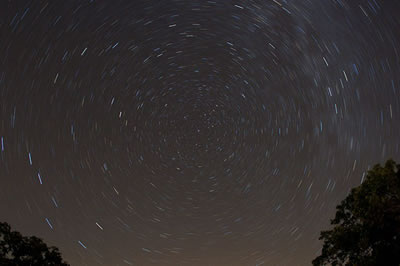Circumpolar stars as seen near Sisseton, SD. Big Dipper is in lower left.
Click on image for full size
Public domain/Wikipedia
Northern Circumpolar Constellations
Because of the rotation of the Earth and its orbit around the Sun, we divide the stars and constellations into two groups. Some stars and constellations never rise nor set, and they are called circumpolar. All the rest are divided into seasonal stars and constellations. Which stars and constellations will be circumpolar and which seasonal depends on your latitude. In the northern hemisphere, we will always be able to see stars and constellations in the the northern circumpolar sky, while in the southern hemisphere, we will always be able to see stars and constellations in the southern circumpolar sky.
Constellations in the northern circumpolar sky include Auriga, Camelopardalis, Cassiopeia, Cepheus, Draco, Lynx, Perseus, Ursa Major, and Ursa Minor. These constellations are always visible in the night sky of the Northern Hemisphere.
Constellations in the southern circumpolar sky include Grus, Phoenix, Indus, Tucana, Pavo, Ara, Eridanus, Hydrus, Horologium, Reticulum, Octans, Apus, Triangulum Australe, Lupus, Circinus, Musca, Crux, Centaurus, Carina, Vela, Puppis, Dorado, and Chamaeleon. These constellations are always visible in the night sky of the Southern Hemisphere.
You might also be interested in:
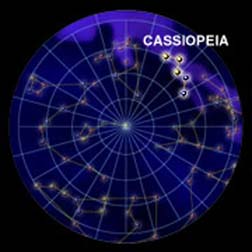
Cassiopeia was the queen of an ancient land. She and her husband, Cepheus, had a daughter named Andromeda. Cassiopeia would always say she was prettier than the sea nymphs. A monster called Cetus was
...more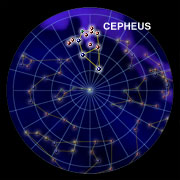
Cepheus was a king in Greek mythology. His wife was Cassiopeia and his daughter was Andromeda. Cassiopeia once said some things to make the sea god angry. A monster was sent up to eat Andromeda, but Perseus
...more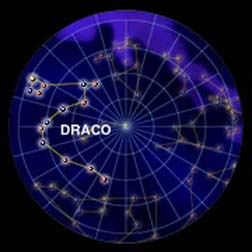
Draco the dragon is a long constellation found in the Northern Hemisphere. It is a circumpolar constellation, which means it revolves around the North Pole. People in the Southern Hemisphere can't see
...more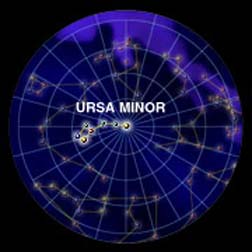
Ursa Minor is usually called the Little Dipper. There is also a constellation called Ursa Major, which is called the Big Dipper. In many different myths, the two are bears. In Greek mythology, Hera turned
...more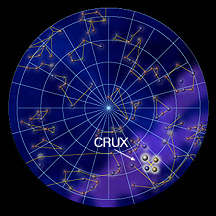
If you live in the Southern hemisphere, or if you are vacationing in someplace like Hawaii, you can see a small but beautiful constellation with the shape of a cross. Its name is Crux and it is located
...more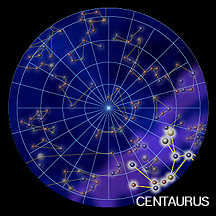
Below the stars of Hydra, the sea serpent and Scorpius, the scorpion, you can find Centaurus. Centaurus is a half-man, half-horse creature. He faces east holding a lance which he is using to defend himself
...more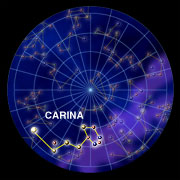
The constellation Carina is known as the Keel. A keel is the wooden bottom of old sailing ships. Carina used to be a part of the large constellation called Argo Navis. It was divided up into four different
...more
Constellations are pictures made up of bright stars which appear close to each other on the sky. Like a game of connect the dots, if you use your imagination when you look at the stars, you may see a dog
...more


